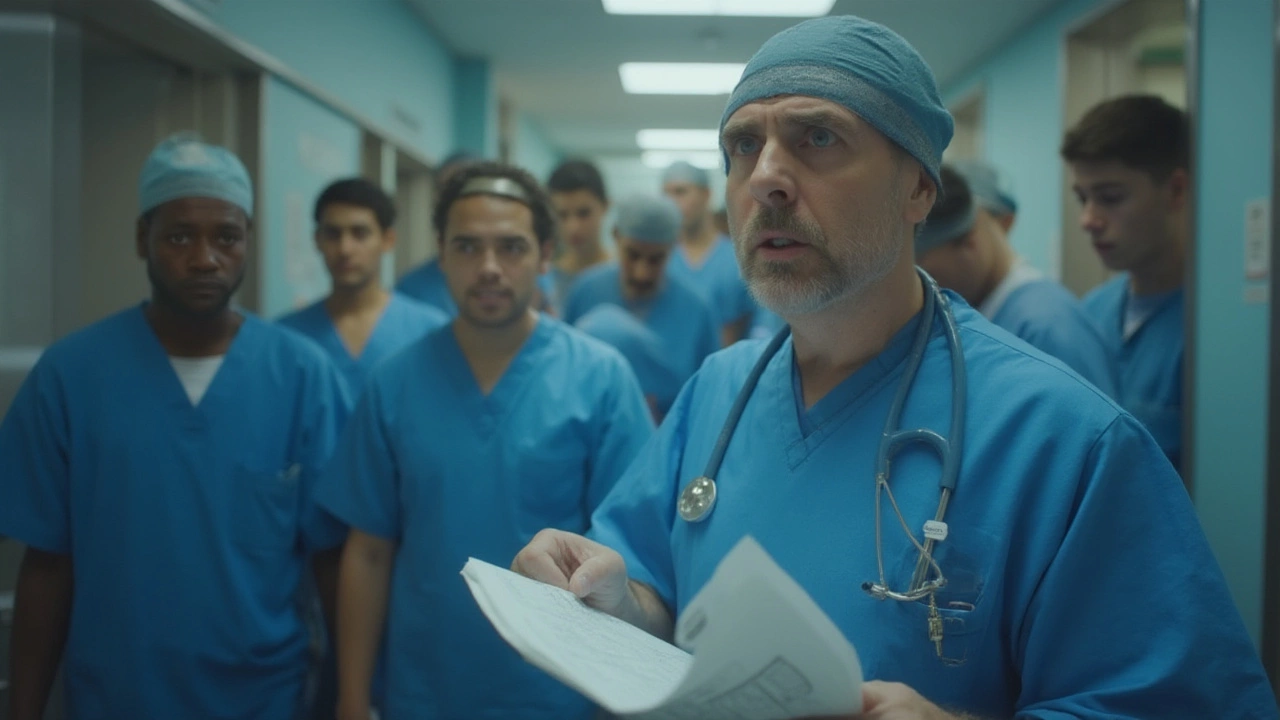Imagine spending a decade of your life studying, working 80 hours a week, missing family events, and running on way too little sleep—just for the chance to call yourself a doctor in the world’s toughest field. No, this isn’t an episode of Grey’s Anatomy, though it might feel like one. It’s the real journey of those chasing the title of the “hardest doctor to become.” The answer isn’t as simple as you’d think. Some specialties break your brain with endless facts, while others demand unshakeable precision and nerves of steel. So, which white coat ranks the highest on the hard-o-meter? Let’s dig in.
The Toughest Specialties: Where Competition Meets Endurance
When folks ask, “What’s the hardest doctor to become?” most people immediately think of neurosurgeons or heart surgeons—and for good reason. The competition for the top spots in these programs is fierce. It’s like applying to Hogwarts, except you’re hoping for lessons in brain surgery, not charms.
Here’s the deal: medical school itself is no walk in the park. You slog through four years just to earn the basics, take the all-important USMLE Step 1 and Step 2 exams, and—if you survive—you apply for residency. Now, the real madness begins.
The hardest specialties to get into based on acceptance rates, length of training, and demands on your soul are:
- Neurosurgery
- Orthopedic Surgery
- Plastic Surgery
- Dermatology
- Cardiothoracic Surgery
- Otolaryngology (ENT)
- Radiation Oncology
- Urology
Here’s a quick look at the hardest doctor to become in terms of competitiveness, using actual data. According to the National Resident Matching Program’s 2024 results:
| Specialty | Average Step 1 Score (Matched) | Length of Residency (Years) | US Residency Positions (2024) |
|---|---|---|---|
| Neurosurgery | 247 | 7 | 241 |
| Dermatology | 251 | 4 | 519 |
| Plastic Surgery | 249 | 6 | 184 |
| Ortho Surgery | 248 | 5 | 797 |
| ENT | 246 | 5 | 348 |
That’s the numbers. But numbers never tell the whole story. Neurosurgery snags the “hardest” title, thanks to seven years’ worth of grueling residency, the highest burnout rates, and tons of applicants chasing a few spots. Dermatology and plastic surgery are almost as tough, attracting candidates with perfect grades and a passion for (sometimes) aesthetic perfection. If you’re eyeing a popular program in a big city, double the competition and pressure.
What Makes a Doctor Specialty So Demanding?
So, what exactly makes one medical field more brutal than another? It boils down to a mix of brains, hands, stamina, and personal sacrifice. Some say the hardest part isn’t the science, but the ability to keep calm in impossible situations—think surgeons reconstructing a face after a horrific accident, or a neurosurgeon repairing a damaged spine after a crash.
Here’s why these specialties crush the dreams of many hopefuls:
- Insane hours: Surgical residents often work 70-90 hours each week. Weekend? What’s that?
- Competition: With spots so limited, even top-of-the-class students might not get in.
- Years of schooling: Seven years of residency for neurosurgery piles on top of four years of med school and sometimes extra research years.
- Emotional load: Patients’ lives literally lie in your hands. The pressure is constant and real.
- Endless exams: Expect board exams, case studies, and assessments every step.
It can honestly make you wonder why anyone signs up for this. Turns out, the few who make it to the end tend to be a special breed—not just smart, but also doggedly persistent, social enough to work with teams, and surprisingly patient. A study by the American Association of Medical Colleges in 2023 showed that applicants to neurosurgery and orthopedics had higher levels of resilience and adaptability than most other medical students. No surprise there.
The stakes don’t let up after training, either. A single slip, and lives can change in seconds. That’s why these specialties attract a certain type. But high risk brings high reward: not just in money (though, let’s be honest, the paychecks are huge), but in impact and daily adrenaline.

Inside the Life: The Daily Grind of the Hardest Doctors
Ever seen someone walk into a room looking like they just ran a marathon—at 7 a.m.? That’s probably a surgical resident. Most hard-to-enter specialties guarantee one thing: your schedule will be unpredictable and brutal. I spoke once to a plastic surgery resident who admitted her longest continuous shift was 32 hours—with just four bathroom breaks and lots of energy gels.
Early mornings, late nights, and being on call are par for the course. Here’s how a typical week might look for residents in the hardest programs:
- Wake up by 5:00 a.m. (sometimes earlier) for pre-rounds.
- Check in with overnight staff, see patients, review surgical plans—before breakfast.
- Spend hours in the OR (operating room), often without real food breaks.
- Rounds with senior doctors, followed by clinics or case studies in the afternoons.
- Nights on-call, fielding emergencies... and repeating it all the next day.
It’s not just long hours—it’s the mental load. Imagine being intently focused for 16 hours straight, knowing a tiny lapse could put a patient at risk. And don’t forget, these doctors are also expected to publish research, mentor students, and keep up with the latest science. Saying it’s a “tough job” might be the understatement of the year.
The burnout rates are sky-high, too. According to Medscape in 2024, nearly 50% of neurosurgeons reported symptoms of burnout, and over a third admitted to considering a career change during training. It’s not rare for residents to miss weddings, holidays, or precious time with their families and pets (shout out to Max, who sometimes wonders where I disappeared to).
Still, ask them why they keep going, and you’ll rarely hear “money” first. Most say the draw comes from a sense of mission—knowing that their work makes a life-or-death difference. Also, there’s a real sense of family within the teams. Residents support each other through all-nighters, botched attempts (everyone makes mistakes), and even the odd laugh in the break room.
Tips for Thriving and Surviving in the Toughest Doctor Specialties
If the last few sections haven’t scared you off, or maybe you’re just delightfully stubborn, here’s what you NEED to know for surviving (maybe thriving) in the toughest specialties:
- Know Your Why: You won’t survive seven years of residency on “kind of” liking surgery. Know what drives you, or you’ll burn out faster than a candle at a dog’s birthday party.
- Build Your Resume Early: Shoot for research, shadowing, and networking years before applying. Mentors help, so don’t be shy about asking questions or seeking advice.
- Take Care of Yourself: Nobody tells you this, but eating real food, catching extra sleep when you can, and squeezing in exercise (even a walk with a dog) are lifesavers.
- Find Your Support System: Whether it’s family, friends, fellow residents, or even your dog—lean on them. Celebrating wins or venting about failures keeps you going.
- Practice Resilience: Things will go wrong. Expect setbacks, learn from mistakes, and don’t let perfectionism ruin your progress.
- Keep Perspective: At the end of the day, you can’t do it all—pick your battles, learn to let go, and enjoy the journey (cheesy, but real).
There are also resources for stress management specifically for medical residents and young doctors—online support groups, wellness initiatives, and even therapy covered by many hospital systems now.
If you’re serious about a specialty like neurosurgery or dermatology, look up program stats, talk to residents, and shadow specialists. A day in their shoes can be eye-opening. Don’t base your whole future on what sounds glamorous. The reality is always more complex and gritty.
Not everyone makes it, and that’s okay. There are thousands of ways to make a difference in medicine—and some of the happiest doctors I know found their real passion in less glamorous, but deeply rewarding fields. But if your heart is still set on the hardest doctor to become, start preparing now. Hustle, keep your sense of humor, and don’t forget to live a little—your patients will thank you for it, and so will your dog.
